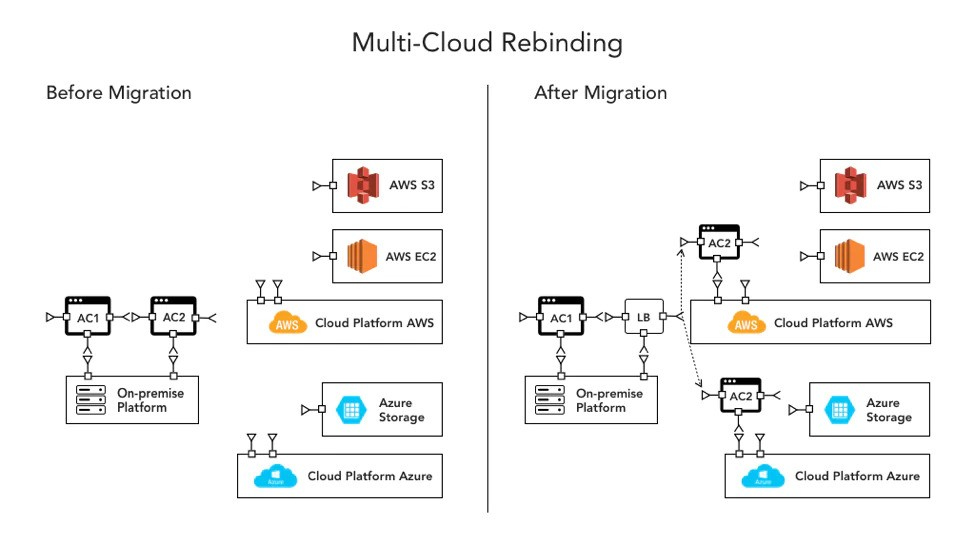
However, this distributed cloud approach introduces complexities, especially when implementing Continuous Integration and Continuous Deployment (CI/CD) pipelines. Ensuring consistent builds, tests, and deployments across multiple cloud environments requires a strategic approach and the right tools.
This article explores how CI/CD is transforming multi-cloud strategies, the challenges involved, and best practices for managing complex deployments — whether you're an enterprise or a custom software development agency in the USA working with global clients.
What is CI/CD in a Multi-Cloud Environment?
CI/CD refers to a software engineering approach where code changes are automatically built, tested, and deployed to production. In a multi-cloud environment, these processes happen across multiple cloud service providers (CSPs), offering improved flexibility, reliability, and performance.
CI (Continuous Integration) focuses on automating the integration of code from multiple developers into a single software project.
CD (Continuous Delivery/Deployment) ensures that software can be reliably released at any time, often automatically.
Implementing CI/CD in a multi-cloud architecture is not just about deploying code — it’s about orchestrating infrastructure, services, and workflows that span multiple cloud ecosystems.
Why Enterprises Choose Multi-Cloud Strategies
Multi-cloud adoption is not just a buzzword; it’s a strategic move. Here’s why organizations prefer multi-cloud deployments:
Avoiding Vendor Lock-In
Relying on one cloud provider can limit flexibility. Multi-cloud allows organizations to switch or diversify without being trapped by a single vendor.Optimizing Cost and Performance
Different cloud providers offer varying pricing models and performance benchmarks. Workloads can be distributed based on cost-efficiency or regional performance.Enhanced Reliability and Disaster Recovery
By distributing resources across clouds, businesses ensure high availability and fault tolerance. If one provider fails, services can continue running on another.Leveraging Best-of-Breed Services
Azure may offer superior identity services, while AWS might be preferred for data lakes. Multi-cloud allows organizations to pick and choose the best.
CI/CD Challenges in Multi-Cloud Environments
As beneficial as multi-cloud can be, it introduces complexity that demands careful orchestration of CI/CD processes. Some key challenges include:
1. Tool Incompatibility
CI/CD tools may behave differently across cloud platforms. A script that works seamlessly in AWS might fail in Azure due to underlying infrastructure differences.
2. Network Latency and Data Transfer
Synchronizing code, containers, or artifacts across multiple cloud regions can introduce latency, slowing down pipeline executions.
3. Security and Compliance
Each cloud provider has its own security policies. Ensuring uniform security standards across environments is crucial, especially in regulated industries.
4. Centralized Observability
Monitoring and logging become more complex when pipelines span multiple environments. Lack of centralized observability can delay issue resolution.
5. Infrastructure as Code (IaC) Complexity
Maintaining IaC scripts for different cloud environments requires either multi-tool proficiency (Terraform, Bicep, CloudFormation) or vendor-agnostic approaches.
Best Practices for CI/CD in Multi-Cloud Environments
Successfully implementing CI/CD across multiple clouds requires planning, tooling, and cultural alignment. Here are some best practices to guide your implementation:
1. Adopt Vendor-Agnostic CI/CD Tools
Choose tools that are cloud-agnostic and support integrations with all major CSPs. Examples include:
Jenkins (with cloud plugins)
GitLab CI/CD
CircleCI
Spinnaker
ArgoCD for GitOps workflows
These tools offer connectors to deploy code across AWS, Azure, GCP, and private clouds.
2. Containerize Applications
Containers provide consistent runtime environments across clouds. Using Docker and orchestrators like Kubernetes (K8s) allows seamless application portability between environments.
You can deploy the same container image in different cloud-hosted Kubernetes clusters — making pipelines more uniform.
3. Use Infrastructure as Code (IaC) for Environment Management
Tools like Terraform allow for provisioning multi-cloud infrastructure in a declarative and reusable manner. Terraform's provider model supports all major CSPs.
Define your environments as code and version them alongside your applications.
4. Implement Multi-Cloud Compatible Secrets Management
Securely managing secrets and credentials across clouds is a must. Consider tools like HashiCorp Vault, AWS Secrets Manager, or Azure Key Vault, and standardize their integration into CI/CD workflows.
5. Enable Unified Monitoring and Logging
Use centralized observability tools that integrate across cloud platforms:
Datadog
New Relic
Prometheus + Grafana
ELK Stack (Elasticsearch, Logstash, Kibana)
These tools provide a unified view of deployment health, resource usage, and user activity across cloud providers.
Power Apps & Low-Code CI/CD in Multi-Cloud
Low-code platforms like Microsoft Power Apps are gaining traction in enterprise development, and they’re not exempt from CI/CD demands — especially when deployed across clouds.
Power Apps development services now often include ALM (Application Lifecycle Management) capabilities using tools like Azure DevOps Pipelines, GitHub Actions, and Power Platform Build Tools.
If you're managing Power Apps in a multi-cloud world — say, storing data in Azure and running connectors to AWS or on-premise services — it's essential to maintain version control, test automation, and consistent deployments. Treating low-code apps as first-class citizens in your CI/CD strategy ensures your business users and developers work harmoniously.
Real-World Example: Multi-Cloud CI/CD for a Retail Enterprise
Let’s consider a US-based retail company working with a custom software development agency in the USA. Their strategy includes:
Hosting their customer-facing website on AWS
Running internal apps on Azure
Using GCP BigQuery for analytics
The CI/CD pipeline involves:
Developers pushing code to GitHub
Automated testing and build processes via Jenkins
Terraform scripts provisioning infrastructure in AWS and Azure
Spinnaker deploying applications to both clouds
A shared Prometheus + Grafana stack monitoring metrics from all environments
This setup allows them to optimize cost and performance while ensuring consistent application delivery — no matter where the service is deployed.
Benefits of Implementing CI/CD in Multi-Cloud
Let’s recap the core benefits:
| Benefit | Description |
|---|---|
| High Availability | Reduce downtime by spreading resources across clouds |
| Scalability | Scale applications where demand is highest |
| Flexibility | Use best-fit services from each provider |
| Faster Time to Market | Automate deployment across environments |
| Compliance | Meet regional or industry compliance by deploying data and services appropriately |
Partnering with the Right Experts
Implementing CI/CD in multi-cloud is not a one-size-fits-all approach. Whether you’re an enterprise building in-house or collaborating with a custom software development agency in the USA, having cloud-native development experts on your side makes a significant difference.
Agencies that understand CI/CD tooling, DevOps culture, and infrastructure automation across multiple platforms can accelerate delivery and reduce operational risks.
Likewise, companies offering Power Apps development services must also modernize their processes to include DevOps and multi-cloud compatibility — no-code doesn't mean no strategy.
Final Thoughts
CI/CD in multi-cloud environments is a game changer for enterprises looking to stay agile, resilient, and competitive. It bridges the gap between innovation and operational stability by automating deployments across diverse infrastructures.
But it’s not without its challenges — from toolchain integration to secrets management and observability. Success lies in standardization, containerization, robust testing, and the right tooling.
Whether you’re building mobile apps, enterprise solutions, or low-code platforms like Power Apps, incorporating multi-cloud CI/CD is a strategic investment in the future of software delivery.
Frequently Asked Questions (FAQs)
1. What tools are best for CI/CD in multi-cloud environments?
Popular tools include Jenkins, GitLab CI/CD, Spinnaker, and CircleCI. For infrastructure provisioning, Terraform is a go-to choice due to its support for multiple cloud providers.
2. How do you ensure security across different cloud platforms in CI/CD?
Use centralized secrets management (e.g., Vault, Azure Key Vault), enforce IAM best practices, and integrate automated security scans into your CI/CD pipelines to identify vulnerabilities early.
3. Can Power Apps be integrated into CI/CD pipelines?
Yes. Power Apps development services can leverage Azure DevOps, GitHub Actions, and Power Platform Build Tools to support CI/CD workflows, version control, and environment promotion.
4. Is multi-cloud CI/CD suitable for small businesses?
It can be, especially for businesses needing high availability or operating in regulated regions. Partnering with a custom software development agency in the USA helps small to mid-sized companies adopt best practices without building large in-house teams.
















